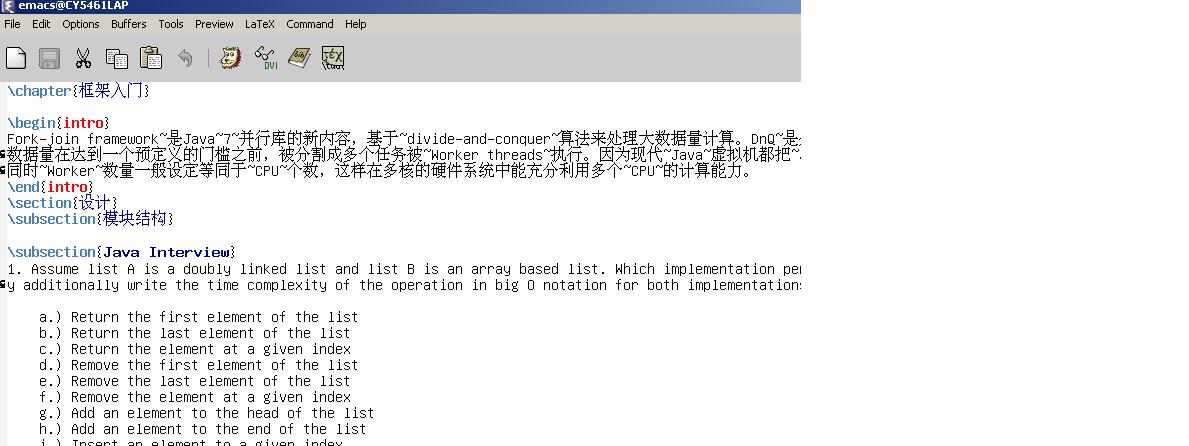漢辰攻略The palest ink is better than the best memory. |
|
2008年7月28日 # --XX:+DoEscapeAnalysis, off by default python 有str object 和 unicode object 兩種字符串, 都可以存放字符的字節編碼,但是他們是不同的type,這一點很重要,也是為什么會有encode 和decode。  >>> t='長城' >>> t='長城' >>> t >>> t '\xb3\xa4\xb3\xc7' '\xb3\xa4\xb3\xc7' >>> t.decode('gb2312').encode('utf-8') >>> t.decode('gb2312').encode('utf-8') '\xe9\x95\xbf\xe5\x9f\x8e' '\xe9\x95\xbf\xe5\x9f\x8e'str_string.encode('codec') 是先調用系統的缺省codec去把str_string轉換為unicode_string,然后用encode的參數codec去轉換為最終的str_string. 相當于str_string.decode('sys_codec').encode('codec')。  import sys import sys sys.setdefaultencoding('utf-8') sys.setdefaultencoding('utf-8')
慕名Emacs是很久的事了,上個周末Google了一天終于把它在Windows下的中文化問題初步解決了。
網上講述Emacs中文問題的帖子很多,不過很多是過時的或不完整的,并以Linux下居多。很多.emacs設置看起來發生了作用,但是在我的機器上不是顯示方塊,就是半個中文字符。前者懷疑未配置好Emacs使其無法讀取系統字體,后者懷疑字符寬度設置還有問題,苦于無暇深究。 最后找到一篇Emacs 中文化指南[http://17xie.com/read-103809.html],講述了在Windows下使用了X11的BDF字體配置Emacs的過程,下載安裝了intlfont,改了相應的emacs設置,Bingo!!!,一試就通。不過字庫還是GB2312的,想把Mule-GBK 和BDF 字體配置在一起,未成功。 貼張圖慶賀一下 
|


